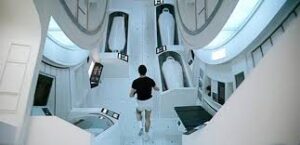Upcoming Events
Events are open to all members and the general public. Sign up for email event updates by registering with Night Sky Network.
Most of our events happen at the Chabot Space and Science Center. Get directions here.
Next General Meeting – WE’RE BACK AT CHABOT!!
(Note that this meeting will be hybrid, in-person and on zoom/facebook. Our speaker will join us IN PERSON in Classroom 3 & 4 / Kepler-Copernicus), as well as in our on-line meeting.
Meeting will be held at the Chabot Space and Science Center Classroom 4 (the Room formerly known as Copernicus). Please enter through the side gate along the back road of the facility.

Baking and Astrophotography share many things in common: You need the right equipment, attention to detail, and a creative flair. If it seems intimidating, following a recipe can be a great way to start. SFAA member Jason Griesbach will guide you through Four Astrophotography Recipes, using only modest equipment. The result will be a heavenly Four-Course “Meal”, as we explore various ways to experience the night sky.
About the Speaker
Jason Griesbach is a Board Member and Lecture Coordinator for the San Francisco Amateur Astronomers (SFAA). As an electrical engineer, he previously designed telescope instrumentation and camera electronics for observatories in Australia in the early 2000’s. Since then he’s designed hardware for medical imaging, optical and time-of-flight spectroscopy, and consumer imaging.
This talk will be available live and publicly at:
Telescope Makers’ Workshop
The Telescope Maker’s Workshop is one of few regularly scheduled such workshops in the world! Every Friday from 7 to 10 PM, amateur telescope makers from the bay area meet at the Chabot Space & Science Center and learn how to grind, shape, polish, and figure mirrors for reflecting telescopes, under the guidance of EAS volunteers. The workshop is free; participants pay only for the mirror blanks and grinding tools, which generally cost between $100-$300, depending on the size of the mirror. All the instruction, grinding grit, testing equipment, and camaraderie is free of charge! For more information, email Richard Ozer at pres@eastbayastro.org, or come by the workshop any Friday to see what it’s all about.
Outreach
In person events are more limited because of COVID, but are being scheduled for schools and other community institutions. Contact us also for possible virtual events, or visit http://www.chabotspace.org for scheduled public virtual telescope viewing events]
EAS sends volunteers to schools, libraries, and anywhere curious aspiring astronomers gather. EAS volunteers bring their own equipment or borrow telescopes. Students, parents, and teachers are always thrilled to look through the telescopes and ask questions. You’ll meet all sorts of interesting people and provide a unique and inspiring experience to kids and parents who may have never looked through a telescope before. Find our next event on the calendar above.
Inquire about and request visits by e-mailing EAS Outreach Coordinator Raymond Howard at outreach@eastbayastro.org. Visit our outreach page to find out about upcoming events.
Members Only Viewing Nights (MOVN)
[In person events are more limited than in the past because of COVID, visit http://www.chabotspace.org for virtual telescope viewing events]
Once a quarter, we schedule a Members Only Viewing Night at the Chabot Telescope Deck for both EAS and Chabot members. This is our opportunity to look through Chabot’s historic instruments and research telescope, as well as bring our own equipment to share in a more quiet venue. The schedule for MOVN will appear in the event calendar below.
Fall Calstar
Spring Calstar 2024 is scheduled for May 1 – May 5 at Lake San Antonio. For more information visit https://calstar.observers.org/
Header photo by EAS member Alan Roche.
